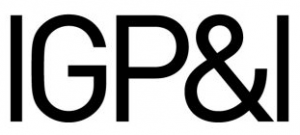A new system of two-way routes for ships in the Bering Sea and Bering Strait aims to reduce the potential for marine casualties and environmental disasters in the region.

IMO adopts first shipping routes into the Arctic
Published 28 May 2018
The IMO Maritime Safety Committee at its 99th session in May 2018 approved a system of two-way routes for ships to follow in the Bering Sea and Bering Strait. The proposal, presented jointly by Russia and the United States (US) in response to increasing shipping traffic in the area, establishes six two-way routes and six precautionary areas in US and Russian territorial waters off the coasts of Alaska and the Chukotskiy Peninsula. Three ‘Areas to be Avoided’ have also been nominated which will ensure that ships avoid culturally and ecologically important coastal waters.
The new routing system takes effect on 1 December 2018 and is the first routing measure to be adopted by the IMO for the Arctic region since the Polar Code entered into force on 1 January 2017. The system is voluntary but recommended for ships of 400 gross tonnes and above and its purpose is to:
reduce the risk of collision and to provide adequate sea room for ships executing collision avoidance measures;
provide ships with a maximum amount of flexibility to avoid ice when present;
assist ships to avoid numerous shoals, reefs and islands just outside the two-way routes, particularly where the area has not been surveyed thoroughly;
allow ships to follow well-defined routes, thereby enhancing the safety and efficiency of navigation; and
prevent and reduce the risk of pollution or other damage to the marine environment, including national and international recognised habitat and species.
The eastern Bering Sea is a relatively shallow body of water and the hydrographic quality of nautical charts may be low. Members and clients trading to the Bering Sea and Bering Strait should therefore ensure that their ships’ masters and officers are made aware of, and follow, the new traffic scheme and update their nautical charts accordingly. For all details, including chartlets and geographical positions, please refer to the IMO Documents NCSR 5/3/7 and NCSR 5/3/8 of 17 November 2017.**


